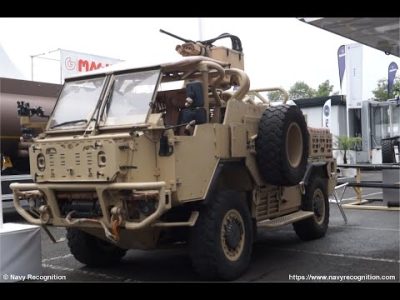Published on 01/18/2021 – Last Updated on 01/18/2021 by OTC
Russia regards the North Atlantic Treaty Organization’s (NATO) expansion eastwards as a threat to its security. After having annexed Crimea to retain the strategic balance against NATO enlargement to Eastern Europe and the broader Black Sea Region, Russia strengthened the Black Sea fleet in Sevastopol Naval Base. The quantity of warships stationed in the naval base grew from 34 to 49, while the total of submarines increased from 1 to 7.
The fleet consists of six new submarines and three large new Admiral Grigorovich-class frigates equipped with Kalibr land-attack cruise missiles and four corvettes also outfitted with Kalibr missiles. Another 3 frigates, at least 13 corvettes and 2 landing ships are proclaimed to be in production for the Black Sea Fleet.

Another great military concern of the confiscation of Crimea is that Russian over-the-horizon sensor systems are able to cover nearly all the Black Sea. When Russian surface-to-air missiles began streaming into Crimea in 2014 and 2015, air defence radars, including long-range early warning, target acquisition, and target engagement radars, began proliferating as well. Moscow also moved in the Monolith-B radar system, an active and passive search and targeting radar that provides coverage of nearly the entire Black Sea when it is positioned at Sevastopol.
It has a passive detection range of some 450 kilometres and brings the Russian military with an excellent real-time picture of the positions of foreign surface vessels operating in the Black Sea. Increased numbers of fixed-wing combat aircraft are also stationed at Belbek Airport near Sevastopol and elsewhere in Crimea. Moscow also deploys the Bastion P coastal defences armed with the P-800 Oniks anti-ship cruise missile, which has a range of up to 300 kilometres.
The growth of Russian military force in the Black Sea has shifted regional naval dominance in Moscow’s favor. However, Russia’s seizure and re-militarization of Crimea has resulted in a reemerging security dilemma in Moscow vis-à-vis NATO nations in the Black Sea.
Russia’s use of the Black Sea as a platform for operations further afield. Control of Crimea has allowed Russia to use the Black Sea as a platform to launch and support naval operations in the Eastern Mediterranean.

Russia’s strategy uses the Mediterranean’s geography to protect Russia’s southern flanks while seeking to challenge the naval supremacy of the North Atlantic Treaty Organization (NATO) and the United States in the eastern Mediterranean. Russia depends on maintaining and expanding its naval presence in the Mediterranean while also securing expanded access to ports and bases, with the possibility of contesting NATO’s dominance in the central Mediterranean as well.
In the near to medium term, the Russian Navy’s role will be to serve as a deterrence force to constrain U.S. and NATO operations in the eastern Mediterranean and to provide forward defense for approaches to the Russian homeland through the Black Sea. It will have some power projection through its ability to hold opponents’ territory at risk with its cruise missile capability, rather than through traditional naval strike groups.
Because of disagreements among NATO’s Black Sea members, there has been no agreed Black Sea strategy by the Alliance. NATO still perceives Russia as a threat. Russia’s wise use of its naval power in the Black Sea and the eastern Mediterranean raised the threat level for NATO.
In the Cold War NATO’s operational plans were based on Turkish Submarines for neutralizing the Soviet navy and amphibious power within the Black Sea. So, Can Turkey balance against the Russian forces in the Eastern Mediterranean Sea and the Black Sea today?
Due to the S-400 procurement, Turkey and the US have some problems, yet Turkey is still one of the most important members of NATO. Turkey developed indigenous armed unmanned aerial vehicles so the military balance in the field of Libya, Syria changed. The Atmaca guided missile and the Gezgin cruise missile increased the firepower of the Turkish Naval Forces. Thanks to the network-centric warfare concept, real-time recognized picture transfer capability has been gained between platforms.

Additionally, in later years, one of the most important projects of the Turkish Defense Industry in recent years is the Submarine Project with Air Independent Propulsion System. When this project has been finished, the Turkish Naval Forces will have submarines that are silent, very difficult to detect, and can stay submerged for 3 weeks. If these submarines would be equipped with Gezgin cruise missile, which is in consideration, the Turkish Naval Forces will gain the ability to engage the depths of the coast secretly from the sea. It is particularly difficult for surface ships to detect submarines with air-independent propulsion systems. Such submarines restrict the freedom navigation of surface warships.
In addition to be a threat for coastal targets, AIP submarines will be a threat to the Russian submarines in the Black Sea as well. Due to the failures in Lada-class submarine project, Russia doesn’t have AIP submarine currently. In spite of its giant military power, Russia seems to be vulnerable to Turkey’s AIP submarines.
In order to curb the usage of Russian naval power in the Black Sea and Eastern Mediterranean against NATO will be possible in case of deploying Turkey’s air-independent propulsion submarines. Turkey may diminish the operational effectivity of the Russian Navy in the Black Sea and Eastern Mediterranean with air-independent propulsion submarines equipped with Gezgin cruise missiles in the network-centric operations concept.

The post Will Turkish AIP submarines with Gezgin Cruise Missiles increase NATO’s dominance against Russia in the Black Sea? appeared first on Naval News.














Comments